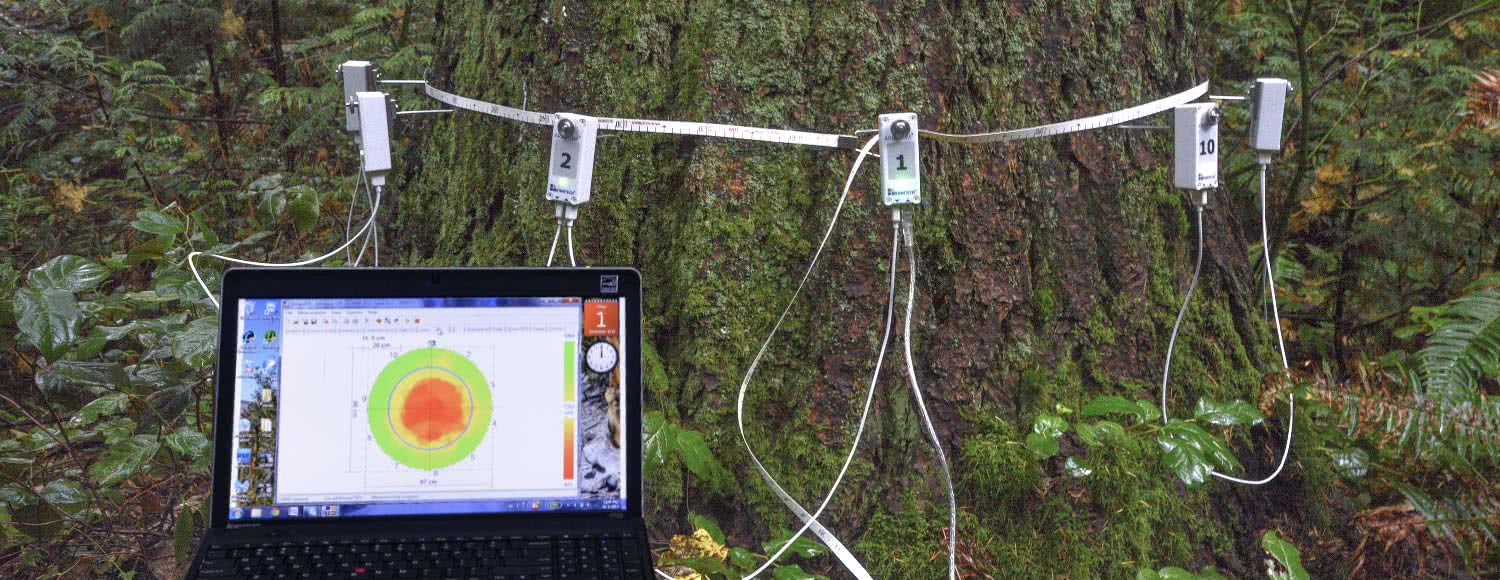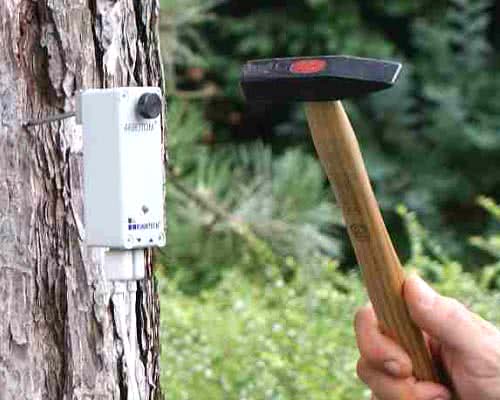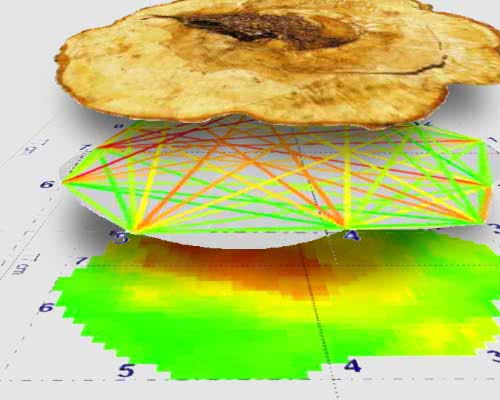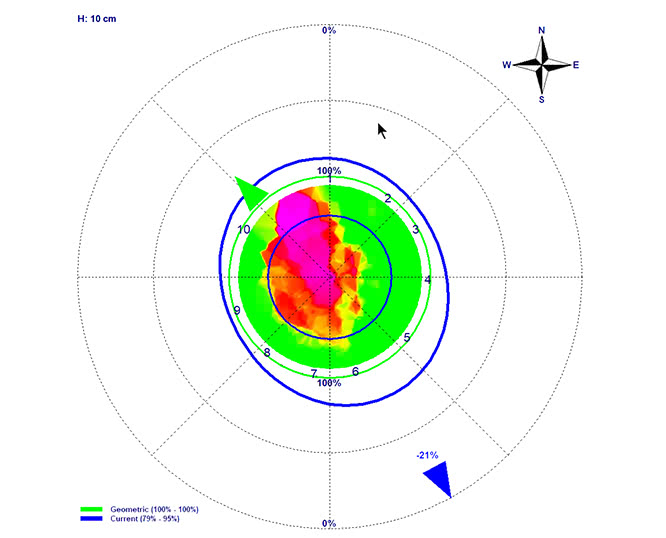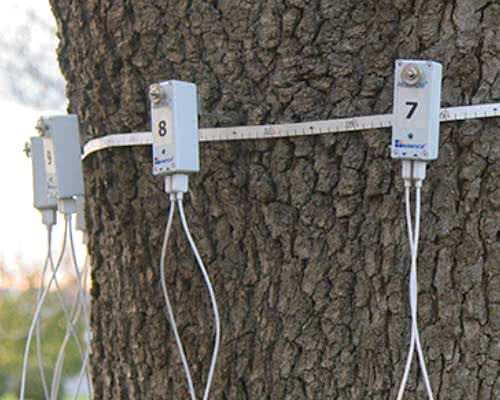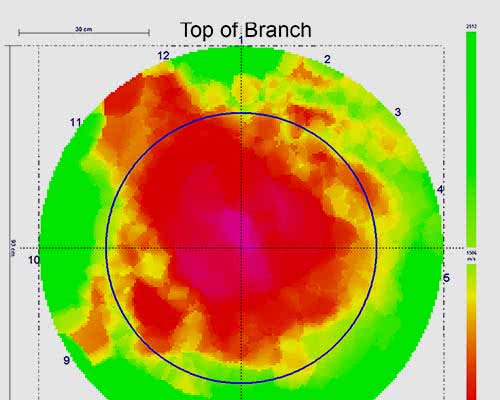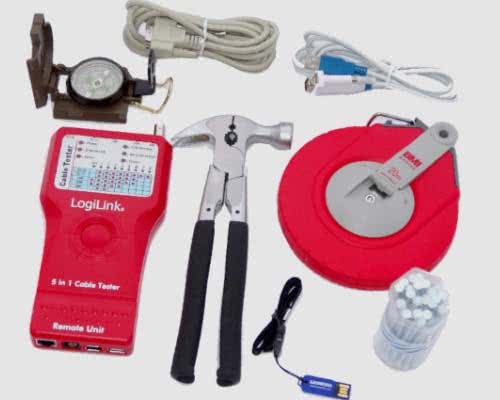Arbotom®
2D/3D Sonic Tree Tomography
The Arbotom® is used in advanced tree risk assessments. By evaluating the condition of the wood quality in the entire cross section, strength loss due to decay can be assessed. That data is then used to gain a better sense of what is happening to the tree and how that might affect the likelihood of failure component in a risk assessment.
When conducting advanced tree risk assessment it is often important to know the extent and configuration of internal decay. The Arbotom uses sonic tomography to detect areas of wood in good or bad condition.
A series of sensors are placed around the tree trunk or limb, each one connected to the next and then to a computer. Each sensor is tapped, which sends a stress wave across the wood to the other sensors. When wood quality is high (solid wood no defect) the stress waves travel rapidly. When wood quality is low (decay present) the stress waves take longer to move through the wood, and if wood is missing (cavity, or crack) they have to travel around that area, thus taking a lot longer to reach other sensors. The data produced is called a tomogram, which provides a display of the stress wave travel times. Interpreting the tomogram allows the user to get a better sense of where decay might be present, as well as the type and extent of the decay. Used in conjunction with the strength loss module, users can then better predict what may be happening inside the tree.
In many cases it is useful to use a Resistograph® as a follow up diagnosis by drilling at one or more of the Arbotom sensor points to confirm the presence or absence of decay and refine the analysis.
When used in combination with the new ArboRadix™ root sensor module, the Arbortom can be used to help locate roots underground.
Sonic tomography is intended for use on standing live trees. It does not work well on timber structures such as totem poles or bridge timbers due to the lack of variability in moisture content, and may give misleading results in green wood that has been felled and is starting to dry out.
Flexible
Use 12 or more sensors for 2D images of smaller diameter trees and up to 24 sensors to create 2D or 3D images on larger diameter tree.
Fast & Easy to Handle
Setup, measure and evaluate within about 15 minutes.
Non-Destructive
Sensor pins are driven only a few millimeters into the wood.
Precise
Software documents all data, including individual measurements.
All-in-one Kit
Sensors are connected by standard computer cables (1m up to 25m). Cables/Sensors can be exchanged and extended individually. Connection to PC & Windows via cable (serial RS232 or USB) or Bluetooth.
Self-calibrating sensors
Sensors self calibrate. Placement is based on the geometry of the tree. One tap per second, and easy to use software allows for immediate check of data quality.
Species-specific algorithms
Species-specific algorithms, and optional color schemes allow for detailed analysis of decay data.
Several configurations available to suit your budget and needs. Capabilities can be extended by adding the Mechical Module for strength loss analysis, the Statistics Module for data evaluation and the Arboradix root sensor module.
Sensors are easily connected
Easy to use sensor cables makes handling and storage simple. Cable length between sensors can be from 1 metre to 25 cm. Typical distances between sensors range from 25 cm (10″) to 1 metre (40″).
Fast results
The Arbotom software allows for immediate review of the results, checking of data quality, and analysis of decay patterns.
Service Free
Technical service is usually not required. Cables and sensors can be easily exchanged if necessary.
Video courtesy of Arbor Tools in Hong Kong
Testing a catalpa tree.

